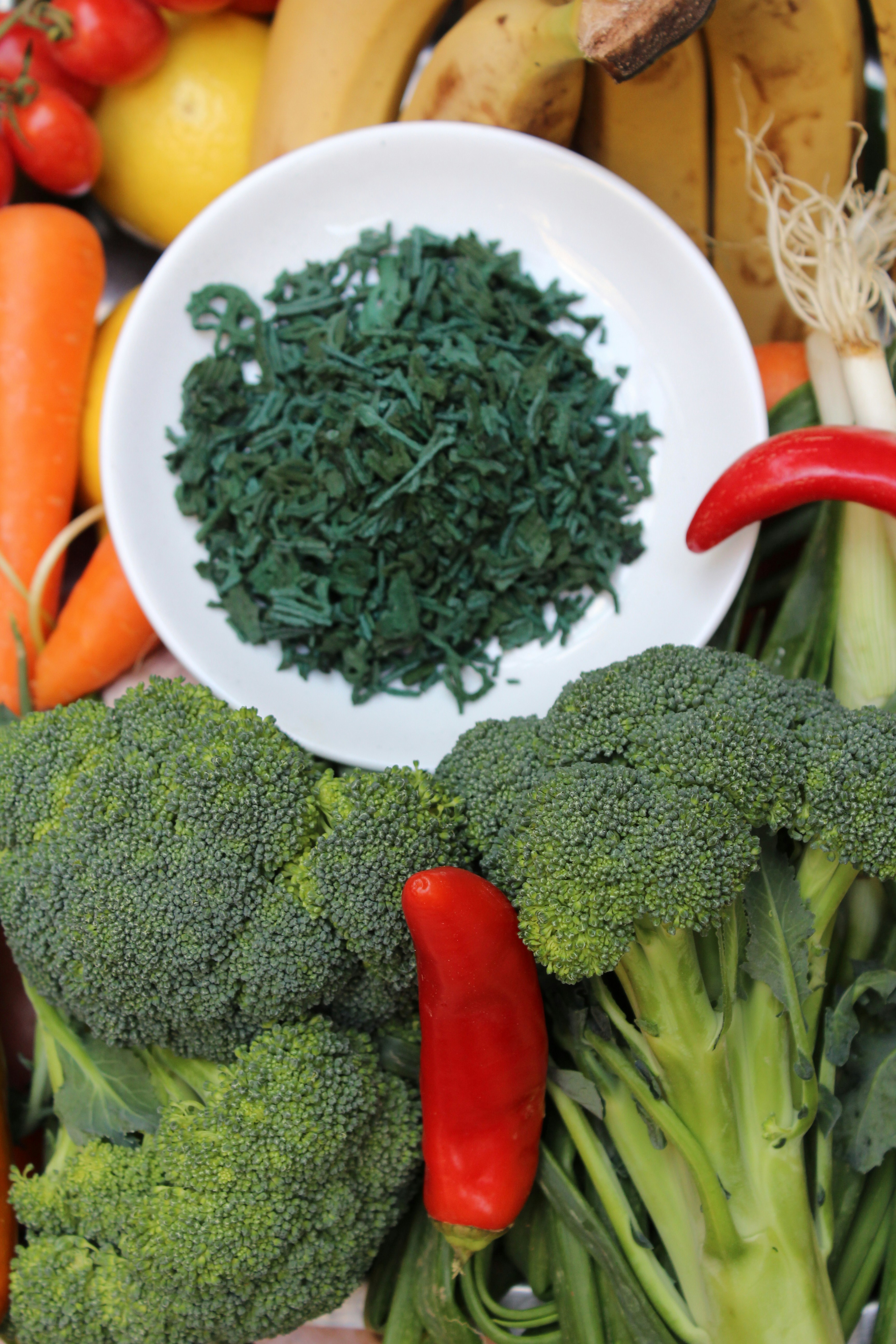Introduction to Protein Sources
Protein is an essential macronutrient that plays a critical role in various bodily functions, including muscle repair, immune system support, and overall health maintenance. It is a key component of every cell in the body, contributing to the structure and function of tissues and organs. The importance of adequate protein intake is particularly evident for individuals who engage in physical activities, as it aids in recovery and muscle synthesis. Thus, understanding diverse sources of protein is crucial for meeting daily nutritional requirements.
The common perception that eggs are a primary source of protein often overshadows the multitude of other food options available. While eggs do provide a high-quality protein source, there are several foods that contain higher protein levels per serving. These alternatives can cater to diverse dietary preferences, including plant-based and animal-based sources. Incorporating a variety of proteins not only enhances the diet but also promotes better health outcomes through diverse nutrient profiles.
Furthermore, incorporating various protein sources can help avoid dietary monotony and increase nutritional diversity. Options range from meat, dairy, and fish to legumes, nuts, and seeds, expanding beyond eggs. Diverse protein sources contain different amino acid profiles that play unique roles in the body, thus contributing to a balanced diet. Understanding these alternatives can empower individuals to make informed food choices and achieve their protein needs effectively, regardless of their lifestyle or dietary restrictions.
As we explore the foods that surpass eggs in protein content, this shift in perspective will highlight the richness of dietary protein sources available and encourage a more balanced approach to nutrition. This knowledge is vital for anyone looking to optimize their health and meal planning.
Nutritional Value of Eggs
Eggs are widely regarded as a staple in many diets around the world, primarily due to their impressive nutritional profile. One large egg contains approximately 6 grams of high-quality protein, which is significant considering their relatively low caloric content of about 70 calories. The protein found in eggs is regarded as complete because it includes all nine essential amino acids, making it particularly beneficial for muscle repair and overall health.
In addition to protein, eggs are a rich source of various essential vitamins and minerals. They are an excellent source of vitamin B12, which is vital for nerve function and the production of DNA and red blood cells. Eggs also contain riboflavin and phosphorus, both of which contribute to energy production and the maintenance of healthy bones. Moreover, the yolk is a significant source of choline, a nutrient important for brain health and development.
Despite the many health benefits associated with eggs, including their versatility in cooking and baking, it is important to recognize that there are numerous other foods that can offer greater protein content per serving. While one egg provides a balanced array of macronutrients and micronutrients, other protein-rich foods can sometimes outweigh eggs in total protein content, making them preferable choices for individuals seeking to optimize their protein intake without significantly increasing caloric consumption.
In summary, while eggs are undeniably a protein-rich food choice packed with essential nutrients, it is essential to explore other dietary options available that may provide even higher levels of protein. Understanding the nutritional composition of a broader range of foods can help individuals to meet their dietary needs more effectively.
Meat and Poultry: Protein Powerhouses
Meat and poultry are widely recognized sources of high-quality protein, providing essential amino acids that contribute significantly to overall health. Among the various options available, chicken breast is often heralded as one of the most protein-rich choices, containing approximately 31 grams of protein per 100 grams. This lean meat is not only low in fat but also versatile, making it an ideal inclusion in a myriad of culinary preparations.
Turkey, another excellent poultry source, boasts a protein content comparable to chicken breast, with about 29 grams of protein per 100 grams. Its lean quality and flavorful profile make it an appealing option for those aiming to maintain a high-protein diet. Ground turkey, in particular, can serve as a healthier alternative to beef in various recipes, offering similar benefits in terms of nutritional value.
When considering red meats, lean cuts of beef, such as sirloin or flank steak, deliver significant protein content, often exceeding 26 grams per 100 grams. It is crucial to choose leaner cuts to minimize saturated fat intake while still enjoying the benefits associated with high-protein consumption. Incorporating these meats into meals can support muscle growth, repair, and overall physiological function.
Lean pork, such as tenderloin, also stands out as an option with about 27 grams of protein per 100 grams. This versatile meat can complement an array of dishes, providing a robust flavor profile while boosting protein intake. For those who enjoy a variety of meats in their diet, incorporating a mixture of these protein-rich options can enhance both nutrition and meal satisfaction.
In conclusion, the variety of meats and poultry available offers numerous opportunities to increase protein consumption. By thoughtfully selecting options such as chicken breast, turkey, lean beef, and pork, individuals can effectively enhance their diets while meeting their protein needs.
Dairy Products: Creamy and Protein-Rich
Dairy products are well known for their creamy textures and rich flavors, but they also serve as excellent sources of protein that can surpass that found in eggs. Eggs contain approximately 6 grams of protein each, making it essential to explore alternatives that provide higher protein content. Among these, Greek yogurt stands out, offering about 10 grams of protein per serving. Not only is it higher in protein, but it also contains probiotics that promote digestive health, making it a beneficial component of a balanced diet.
Cottage cheese is another dairy product that boasts an impressive protein profile. With around 14 grams of protein per half-cup serving, this versatile food can be incorporated into various dishes, ranging from salads to desserts. Its low-fat varieties are particularly appealing to those looking to manage their weight without sacrificing protein intake. Beyond its protein content, cottage cheese is also rich in calcium, which is vital for maintaining bone health.
Other noteworthy dairy products include ricotta and milk, which also contribute significantly to protein intake. Ricotta cheese, typically found in pasta dishes, contains about 7 grams of protein per half-cup serving, providing a delightful way to enhance flavor while boosting nutrition. Meanwhile, a cup of milk contains around 8 grams of protein, making it a staple in many households. For those who are lactose intolerant or following dairy-free diets, alternatives such as soy milk also provide a comparable protein content when fortified.
Incorporating these dairy products into your diet can elevate your protein consumption effectively, whether you’re building muscle, recovering from exercise, or simply aiming for a nutritious lifestyle. With their diverse flavors and textures, these creamy and protein-rich options offer not only dietary benefits but also culinary versatility.
Legumes: Plant-Based Protein Alternatives
Legumes, which include lentils, chickpeas, and black beans, are an excellent source of plant-based protein, making them a fundamental component in vegetarian and vegan diets. With the increasing popularity of plant-based diets, lentils stand out as an affordable and versatile option. For instance, one cup of cooked lentils provides approximately 18 grams of protein, surpassing the protein content found in a single large egg.
Chickpeas, another popular legume, also offer substantial nutritional benefits. A one-cup serving of cooked chickpeas contains about 15 grams of protein. Additionally, they are rich in dietary fiber, vitamins, and minerals, contributing to overall health while supporting muscle repair and growth. The versatility of chickpeas allows them to be used in a variety of dishes, from salads to hearty stews and hummus, enhancing their appeal as a protein source.
Black beans, known for their rich flavor and creamy texture, provide roughly 15 grams of protein per one-cup serving as well. They are not only high in protein but also packed with fiber and antioxidants, which can aid in digestion and promote heart health. Incorporating black beans into meals such as burritos, soups, or salads can enrich the overall nutrient profile of a dish while ensuring adequate protein intake.
Moreover, legumes are low in fat and cost-effective, making them accessible sources of protein that can easily be integrated into various diets. With their impressive protein content and numerous health benefits, legumes serve as an excellent alternative to animal-based proteins, supporting both the nutritional needs of individuals seeking plant-based options and the broader movement towards sustainable eating practices.
Nuts and Seeds: Small But Mighty
Nuts and seeds, although often overlooked, are excellent sources of protein and bring a multitude of health benefits to the table. For individuals looking for protein-rich alternatives to eggs, incorporating these nutrient-dense foods into daily meals can be both satisfying and advantageous. Almonds, for instance, contain approximately 6 grams of protein per ounce, making them an excellent choice for snacking or as an addition to a variety of dishes. Their high content of healthy fats, fiber, and vitamins further enhances their status as a superfood.
Pumpkin seeds, frequently termed pepitas, are another fantastic option, boasting about 9 grams of protein per ounce. They are also rich in magnesium, iron, and zinc, contributing to various bodily functions, including immune support and muscle health. These seeds can be easily sprinkled on salads, incorporated into baking recipes, or enjoyed on their own as a crunchy, nutritious snack.
Chia seeds, despite their small size, provide a considerable amount of protein, with about 4 grams per ounce. Additionally, they are known for their high fiber content and their ability to absorb water, resulting in a gel-like substance that can improve digestion and promote satiety. Blending chia seeds into smoothies, making chia pudding, or adding them to yogurt can significantly boost the nutritional profile of any meal.
Other notable nuts include pistachios and cashews, both of which accompany their protein content with a healthy dose of fats and nutrients. Cashews contain roughly 5 grams of protein per ounce, while pistachios offer about 6 grams. By integrating these nuts and seeds into various recipes and daily snacks, individuals can easily enhance their protein intake while reaping the many other health benefits they provide.
Fish and Seafood: Protein from the Ocean
Fish and seafood are excellent sources of protein, often surpassing the protein content found in eggs. Incorporating these marine options into one’s diet can not only enhance protein intake but also provide additional health benefits, particularly due to their rich omega-3 fatty acids. Among the various seafood options, salmon, tuna, and shrimp stand out for their high protein content and nutritional value.
Salmon is particularly notable, with approximately 22 grams of protein per 3-ounce serving. This fish is also rich in essential omega-3 fatty acids, which have been linked to numerous health benefits, including improved heart health and brain function. Additionally, salmon is a source of B vitamins, selenium, and potassium, thus offering a holistic nutritional profile that supports overall wellness.
Tuna, another excellent protein source, boasts around 25 grams of protein per 3-ounce serving. Its low fat content makes it a desirable option for those seeking a lean protein source. Tuna is versatile and can be integrated into various dishes, from salads to sandwiches, enhancing the flavor while significantly contributing to daily protein needs. Moreover, it is rich in vitamin D and various minerals, making it beneficial for maintaining bone health and immune function.
Shrimp is also a protein-packed choice, providing approximately 20 grams of protein per 3-ounce serving. Besides being low in calories, shrimp is another source of omega-3 fatty acids, along with astaxanthin, a powerful antioxidant that may protect against various diseases. Shrimp can be easily incorporated into numerous recipes, offering culinary diversity while promoting a healthy diet.
Incorporating fish and seafood into dietary routines not only boosts protein intake but also contributes vital nutrients that are essential for optimal health. By diversifying protein sources and including ocean-derived options, individuals can enjoy a well-rounded and nutritious diet.
Protein Supplements: When Food Isn’t Enough
In today’s fast-paced world, many individuals struggle to meet their daily protein requirements solely through whole foods. This is where protein supplements come into play, serving as a convenient and effective solution for those who need an extra protein boost. Protein supplements, such as whey protein and plant-based protein powders, have gained popularity among athletes, fitness enthusiasts, and even those with specific dietary restrictions.
Whey protein, derived from milk during the cheese-making process, is known for its high biological value and rapid absorption rate. This means that the body can utilize it effectively for muscle repair and growth. On the other hand, plant-based protein powders offer a suitable alternative for vegans and vegetarians. Options like pea protein, brown rice protein, and hemp protein provide various amino acids crucial for muscle recovery and overall health. These supplements are not just limited to those involved in intense exercise; they can also benefit individuals seeking to improve their protein intake due to age-related muscle loss or certain medical conditions.
When considering protein supplements, it is essential to evaluate several factors. First, examine the ingredient list for any potential allergens or artificial additives. Second, assess the protein source to ensure it aligns with your dietary preferences. For instance, whey protein might not be suitable for lactose-intolerant individuals, while plant-based options may need to be combined for optimal amino acid profiles. Furthermore, consider the caloric content and whether it fits within your overall dietary goals.
In addition, it is crucial to consult with a healthcare professional or a registered dietitian before starting any supplementation regimen, particularly if you have pre-existing health concerns. With the right approach, protein supplements can effectively complement a balanced diet, ensuring that you achieve your protein intake goals while supporting your health and fitness aspirations.
Conclusion: Diversifying Protein Sources
Incorporating a diverse array of protein sources is essential for a well-rounded diet that supports overall health and wellness. While eggs are widely recognized for their high protein content and nutritional benefits, it is important to acknowledge that several other foods contain even greater amounts of protein. By exploring these alternatives, individuals can not only meet their protein needs but also enhance their dietary variety, which is crucial for maintaining interest in meals and ensuring a broader intake of nutrients.
Diversifying protein sources helps to ensure a broader spectrum of amino acids, vitamins, and minerals, all of which play vital roles in bodily functions such as muscle repair, immune support, and energy production. Foods such as legumes, nuts, seeds, dairy products, and certain grains provide optimal protein levels while offering additional health benefits, such as fiber and healthy fats. This approach not only enhances nutritional profiles but also supports various dietary preferences and restrictions, making it easier for everyone to achieve their dietary goals.
Moreover, embracing a variety of protein sources can be advantageous for those looking to reduce their reliance on any single food, including eggs. This not only helps to mitigate potential food sensitivities or allergies but also contributes to a more sustainable dietary pattern. With careful planning, one can integrate various protein-rich foods seamlessly into their daily meals, allowing for greater culinary creativity and enjoyment.
In conclusion, recognizing that many foods contain higher protein levels than eggs facilitates a broader understanding of nutrition. By diversifying protein sources, individuals can better meet their health and wellness objectives while enjoying a wider range of delicious and nutritious foods.


